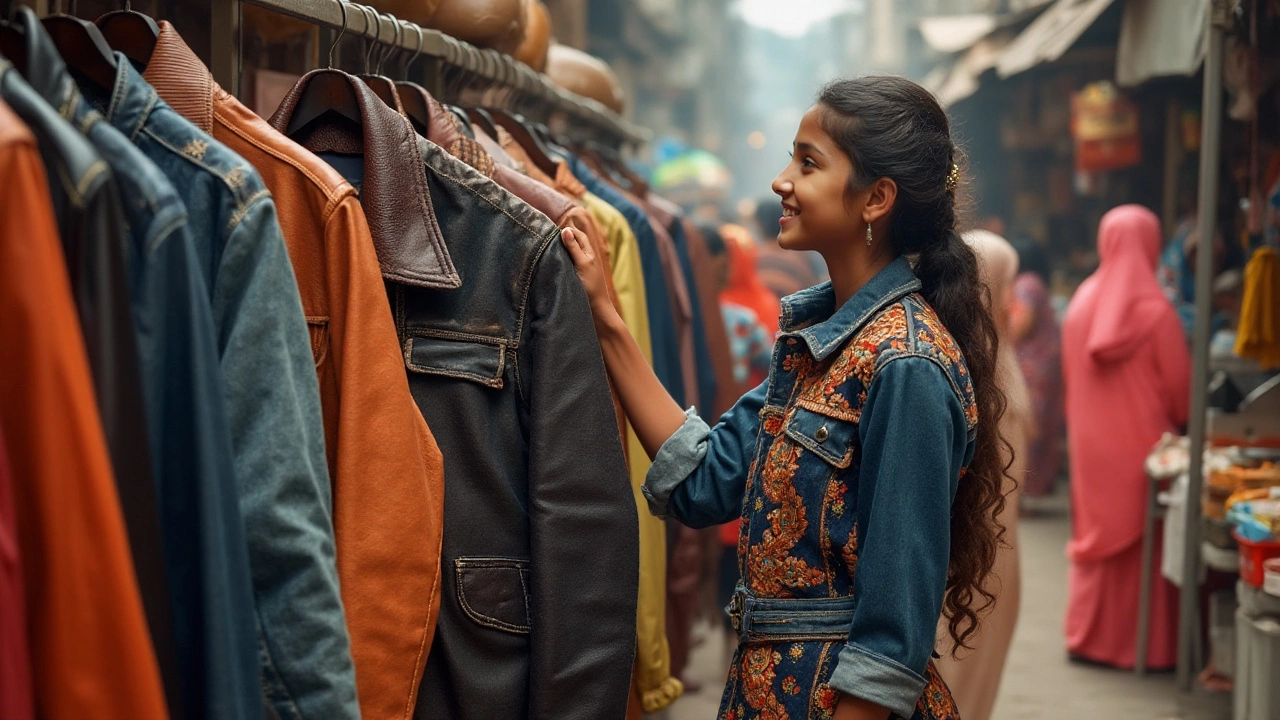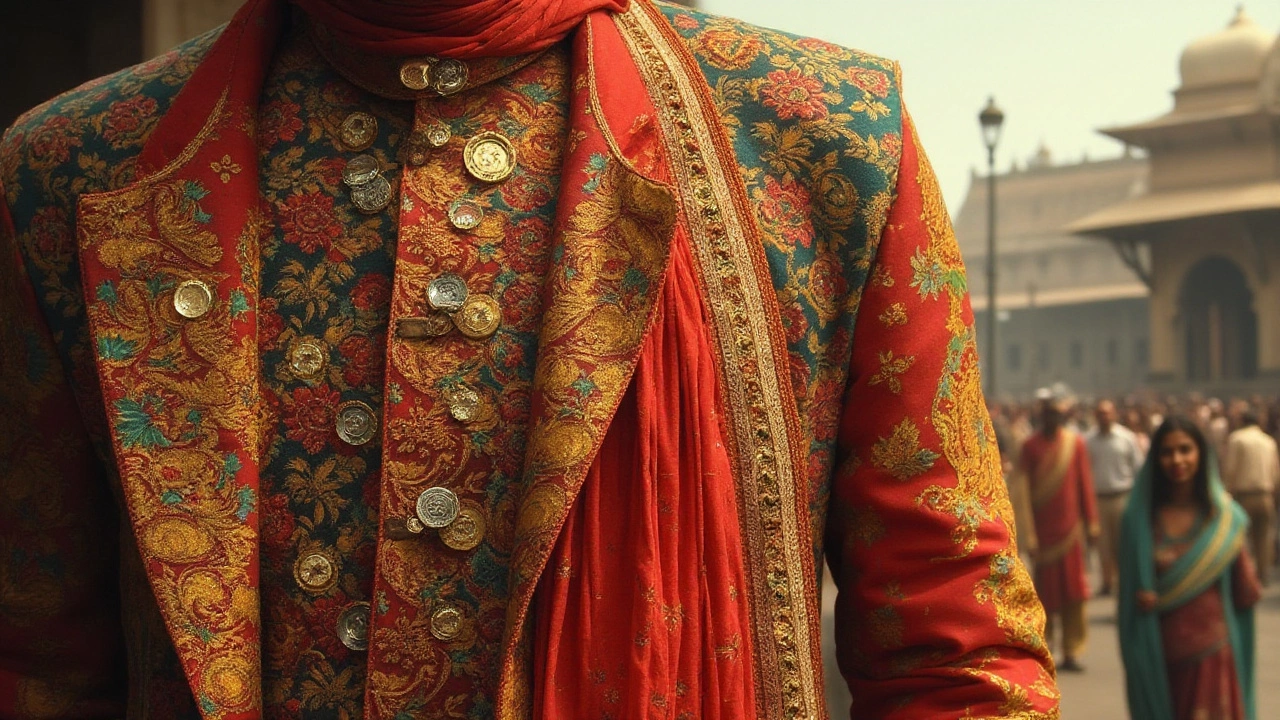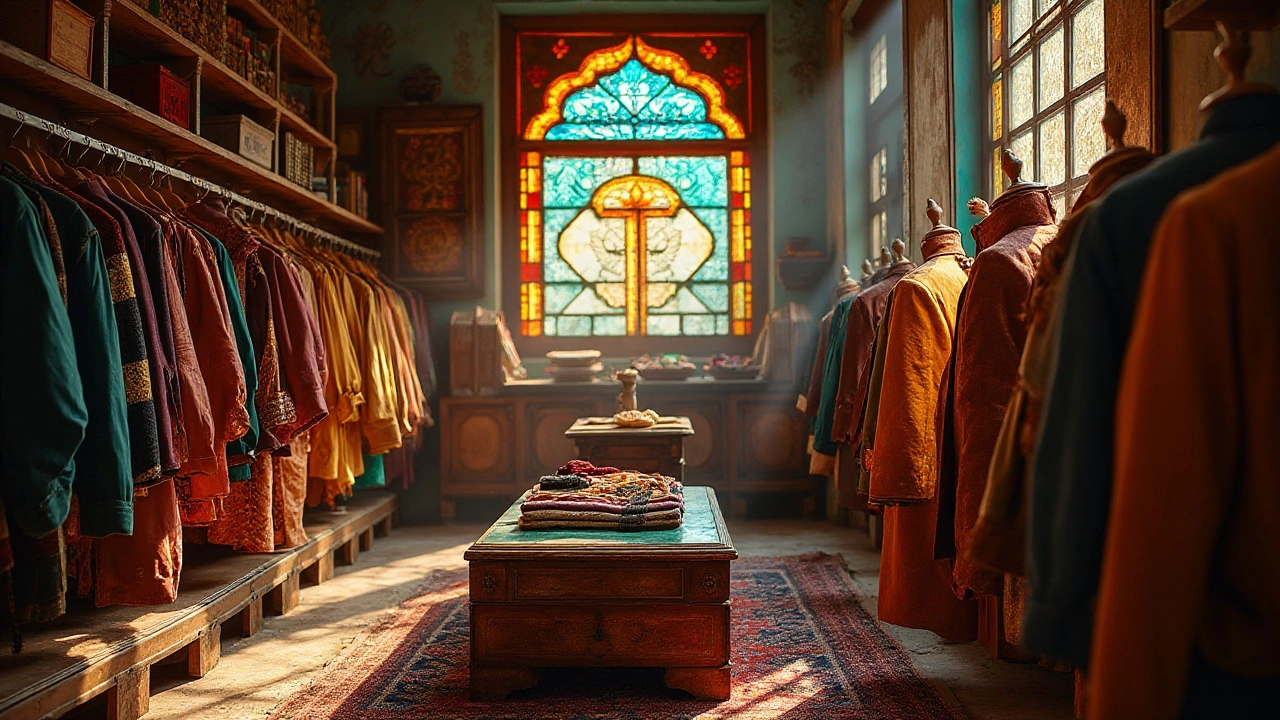Few things bring as much charm and character to an outfit as a beautifully crafted old jacket. These pieces often carry with them stories woven into the fabric, reminiscing of different times and eras. But when we talk about old clothes, particularly jackets, there's often a bit of confusion about what to call them. Terms like vintage, retro, and second-hand float around, sometimes interchangeably, but they each have their unique significance.
In the world of fashion, labels matter as much as the garments themselves. Knowing the correct terminology doesn't just make for interesting trivia; it helps in understanding the evolution of styles over decades and even in maintaining the integrity of these iconic pieces. Whether you're drawn to the nostalgia of a bygone era or simply love the stylish look, knowing what to name your jacket can be the first step in appreciating their timeless allure.
- Defining Vintage and Retro
- Historical Significance of Old Jackets
- Popular Types of Old Jackets
- Caring for Vintage Jackets
Defining Vintage and Retro
The terms "vintage" and "retro" often pop up when discussing old clothing, especially when it comes to jackets. While they are sometimes used synonymously in everyday language, each term has its own distinct meaning in the fashion world. Understanding these definitions can enrich your appreciation for these garments and help you communicate effectively within fashion circles. So, what exactly do these terms entail?
To start, let's delve into the definition of vintage jackets. In fashion, "vintage" refers to items that are at least 20 years old, but typically less than 100 years old. This means that a jacket from the 1980s, 1990s, or even the early 2000s can be considered vintage today. These pieces often showcase the fabric and design tendencies of a particular decade, offering a peek into the cultural and style preferences of that time. Authenticity is a key factor, and collectors often seek pieces that embody the quintessential elements of an era.
"Retro," on the other hand, is more about style than age. It refers to items that are inspired by trends from the past but are not necessarily old themselves. A retro jacket might be a brand-new item designed to look like it came straight out of the 1970s, complete with wide lapels and vibrant, oversized patterns. In essence, retro is an homage, a revival of a specific fashion trend that designers and brands recreate to appeal to nostalgic buyers. Unlike vintage, retro does not require garments to have been produced during a previous time period.
Fashion designer Donatella Versace once remarked, "Fashion is about dreaming and making other people dream." This captures the essence of vintage and retro garments, where the dream is to relive—or at least romantically interpret—past eras through fabric and form.
There are key considerations when identifying and shopping for vintage or retro clothing. With vintage, authenticity and condition are prime. Always check for authenticity marks, original labels, and the integrity of the fabric. An authentic vintage label often includes details like the name of the designer or brand, and sometimes even the place of manufacturing. Meanwhile, shopping retro is more about personal taste—you can focus on looks inspired by an era you find appealing. Retro pieces can blend seamlessly into modern wardrobes, allowing contemporary style tweaks with a nod to the past.
It’s also worthwhile to note that both vintage and retro hold different places in the fashion economy. Vintage pieces, especially those from renowned designers, can accrue significant value over time, serving as collectibles. The rarer the piece, the more sought-after it becomes. Conversely, retro clothes offer more affordable ways to express fascination with past styles, without the hefty price tag that often accompanies genuine vintage finds.
Understanding these terms also plays a vital role in how we view the environmental impact of our clothing choices. Vintage shopping promotes reuse, effectively reducing waste and supporting sustainable fashion practices. Retro, predominantly produced new, needs careful consumption consideration to ensure it doesn’t contribute to fast fashion waste. The influence of these styles transcends pure aesthetics, urging thoughtful consumerism.

Historical Significance of Old Jackets
Old jackets have a profound historical significance that mirrors the social, cultural, and economic landscapes of their times. These garments, often tagged under vintage jackets or retro fashion, do more than keep us warm; they tell a story. Take, for example, the classic leather biker jacket. Initially popularized by icons like Marlon Brando and James Dean, it became a symbol of rebellion and counterculture in the 1950s. Such a jacket wasn't just an item of clothing; it was an emblem of individuality and resistance.
As we trace the lineage of jackets through the decades, we encounter the British Mod movement in the 1960s that introduced military-inspired parkas. Initially, a practical choice for scooter-riding mods wanting to avoid the unsightly aftermath of rain, these jackets transcended into a fashion staple. And who could forget the iconic pea coats, originating from Dutch naval wear and adopted widely by navies across the globe? These coats not only reflect functional design but also mark a period when military influences heavily dictated fashion trends.
Even the seemingly simple denim jacket holds a piece of history. It was a staple during the Great Depression, favored for its durability and affordability. In the 1970s and 1980s, it saw a renaissance, becoming a canvas for self-expression, adorned with patches and embroidery that articulated the wearer's personality and beliefs. Each stitch, each patch, told a story, offering a glimpse into the vibrancy and conflicts of the times. As Oscar Wilde remarked, “One should either be a work of art or wear a work of art.”
The sentiment captures not just a piece of advice, but an understanding of clothing as an embodiment of one’s persona.
For fashion historians and enthusiasts alike, old jackets serve as a tactile archive of the past. They invite us to explore not just the textiles or styles but the eras they represent. In retail terms, the market for these parts of yesteryears is thriving, with vintage shops and online platforms making them available to a new generation of eco-conscious and fashion-forward individuals. As reported by ThredUp's 2023 report, the second-hand clothing market is projected to be worth over $50 billion by 2025, underscoring a shift towards sustainability coupled with an appreciation for the past. Such statistics not only shed light on consumer habits but also highlight the increasing value placed on garments with a history, especially second-hand clothing.
Moreover, every piece comes with its own unique nuances, engravings, and perhaps even a sense of nostalgia that cannot be replicated by modern imitations. So, when one dons an old jacket, they are quite literally wearing a piece of history, a relic from when things were made to last, crafted with care, and designed to endure. These jackets, therefore, become passports, taking us on a journey back in time while making their wearers feel connected to something greater than trends or seasonal styles, rooted deeply in human stories and societal shifts.

Popular Types of Old Jackets
Stepping into the domain of vintage jackets is like opening a treasure chest filled with history and style. Each jacket tells a story of its era, reflecting not just fashion trends but the cultural shifts of the time. One of the most iconic styles is the leather jacket, an undisputed symbol of rebellion and coolness that has been influencing fashion since the early 20th century. Initially designed for aviators during World War I, these jackets quickly became the epitome of rugged masculinity after being popularized in Hollywood in the 1950s. James Dean and Marlon Brando famously sported them, turning them into a timeless staple. The appeal of the leather jacket never waned, and even today, many people cherish their old, leather pieces not just for warmth, but as a nod to enduring style.
The bomber jacket, originally designed for military pilots in World War II, is another favorite among enthusiasts of old clothes. Its utilitarian design, characterized by a fitted waist and cuffs, has transcended military use and become a stylish addition to any wardrobe. Bomber jackets are typically made of leather or nylon, offering both durability and comfort. Their versatility is unmatched, with both men and women embracing the jacket's ability to adapt to various looks—formal or casual. In recent decades, fashion houses have reimagined the bomber jacket, introducing variants with embroidery and bold colors, a testament to its ever-evolving appeal while retaining the vintage charm that made it famous.
Regarded as the quintessential British classic, the tweed jacket, with its houndstooth and checkered patterns, has long been associated with sophistication and leisurely pursuits. Originating from the Scottish Highlands, these jackets were initially designed for outdoor activities such as hunting and fishing. The fabric is renowned for its durability and warmth, making it a favored choice in the chillier climates of Europe. Famous figures from Winston Churchill to modern-day style icons have embraced tweed jackets, keeping them in the spotlight of retro fashion. Tweed’s ability to migrate from the countryside to the city streets illustrates its versatility and timeless elegance.
The denim jacket is another staple in the vintage fashion repertoire, bearing a legacy that harks back to the late 1800s. Levi Strauss first introduced it as a workwear garment, meant to endure the rigors of physical labor. By the mid-20th century, however, it had become a symbol of youthful nonconformity, thanks to the rise of rock and roll, and its adoption by cultural icons like John Lennon. Today, the denim jacket remains a symbol of comfort and style, versatile enough to be paired with just about anything. Even decades-old, faded denim jackets are cherished for their authentic, lived-in look—each stain and fray telling a unique story.
A fascinating insight into the popularity of these jackets can be gleaned from sales trends in the second-hand market. According to a report by ThredUp, the fashion resale market is projected to grow eleven times faster than the broader retail clothing market over the next few years. This indicates a rising trend not only in sustainable fashion choices but in the appreciation for unique, one-of-a-kind pieces that offer both style and a sense of history. Fashion anthropologist Valerie Steele notes, "Clothing is a form of communication, and vintage, in particular, speaks to something deeply personal."
For those considering purchasing a retro fashion piece, attending estate sales or visiting local thrift stores can yield some unexpected treasures. The thrill of finding a jacket with decades of history is unmatched, and with each purchase, consumers are contributing to more sustainable, environmentally conscious fashion practices. These garments provide a tangible link to the past, offering wearers not just a piece of clothing but a piece of history to carry forward. In owning a vintage jacket, one doesn't just wear it—they tell a story, preserve art, and celebrate eras gone by.

Caring for Vintage Jackets
Preserving the beauty and integrity of vintage jackets is an art that requires a mixture of gentle handling and informed care. These garments, often having traversed decades, carry with them not only aesthetic appeal but also delicate fabric conditions that necessitate mindful upkeep. The first rule in caring for any vintage piece is to know your fabric. Different materials demand different cleaning approaches; a wool jacket will age quite differently from a leather one, which means understanding fabric-specific care is crucial. For instance, wool often benefits from a gentle steam rather than a vigorous wash, while leather thrives with occasional conditioning to maintain its suppleness.
Proper storage is integral to keeping these garments in pristine condition. When hanging vintage jackets, always utilize padded hangers to prevent unwelcome stretching, especially at the shoulders. As sunlight can be a fierce adversary to fabric, leading to fading, seek out a cool, dry place away from direct UV exposure. This simple measure helps preserve not just the color, but also the overall strength of the fabric fibers, resulting in a jacket that remains faithful to its original appeal. For jackets featuring ornate embellishments or delicate stitching, consider using acid-free paper layers between folds to reduce friction and pressure.
"Invest in high-quality garment bags," advises Alex Spencer, a respected name in sustainable fashion, "particularly for items with intricate detailing or historical significance."
Sometimes, even with the best care, vintage jackets might need professional cleaning. Here, specialization becomes paramount. Always choose a cleaner who understands vintage materials; they should ideally have experience handling older garments. Ask around in vintage fashion circles for recommendations—it’s worth taking time to find artists who treat these pieces as the treasures they truly are. Regular inspection for damages or signs of decay is equally important. Checking periodically for moth damage or mold ensures that minor issues don't burgeon into irreversible damages. It’s advisable to carry out these inspections before and after the change of seasons, preparing the jackets for long-term storage or regular use.
When it comes to minor repairs, a little handiwork can go a long way. Replacing a missing button or tightening a loose seam requires patience but is far from unmanageable with a basic sewing kit. If the thought of needlework seems daunting, many communities host workshops focused on skill-building around garment repair—perfect places not only to learn but to meet fellow enthusiasts. Consider, too, documenting any modifications you make. A record of alterations made over time can become an unofficial history of the piece, adding to its storied past. Such documentation transforms each vintage jacket into a physical narrative, akin to a novel whose chapters you and previous owners have penned over the years.
